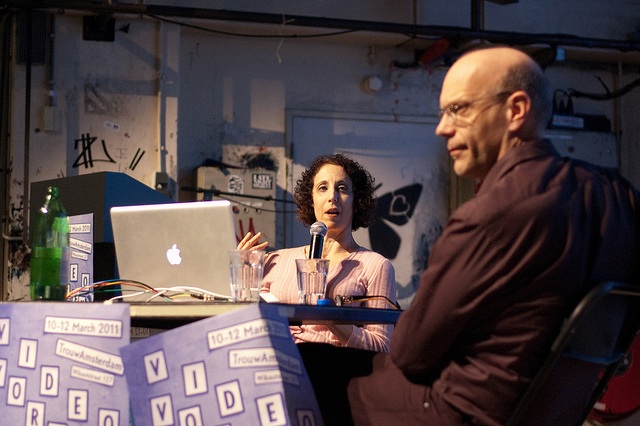(Part 2 of 2 – In conversation with Natalie Bookchin)
Mass Ornament
[vimeo]http://vimeo.com/5403546[/vimeo]
G: How did you come to use this idea of a ‘mass ornament’?
N: I began with the desire to do a piece that investigated the changing online status of video. Here, the emphasis is no longer on a single isolated video but on multiple chains of related videos, chains of responses, re-enactments, and remixes, and these responses are both to previous videos in the chain or to mass culture imagery.
G: In Mass Ornament you pay special attention to the audio track, it leads you through the work. This changes in Testament, where the image itself is not carrying the sequence and the sound becomes very very important.
N: Yes that is absolutely true. Sound, or rather speech, is the determinant factor in Testament. I primarily edit for sound rather than image. At first I thought, “how in the world am I going to make it a visually compelling piece?” but it turns out that image is critical – the image of the faces of the speakers give the fragmentary speech more weight, and grounds it from descending into a series of anonymous rants. The scale of the image in the installation and the direct gaze of the speaker to the viewer create a sense of empathy between the two. Unlike Mass Ornament, I haven’t added sound, I’ve just cleaned it up and edited it, paying attention to rhythm and musicality and of course to what is being said. In Mass Ornament, I got rid of the original music tracks from most of the clips; besides adding my own musical tracks, in some sequences I’ve added ambient sounds of the rooms and of the bodies in the rooms. I did this to individuate separate spaces and dancers, creating a presence of the room and the individuals, so that even with a unifying musical track, we would be reminded of the individual in their particular space. I did not want to depict the individual reduced to an abstraction, to a “mass ornament”.
G: To come back to this motive: a heterogeneous, participatory culture that we know, the YouTube genealogy, and turning that into a collective statement made by you as an individual artist, people nonetheless see something happening here. A transformation is taking place, going beyond what people experience and express themselves. Have you had any responses from people who simply promote participatory culture?
N: No I haven’t! Although some people do tend to be relieved that I put my videos online. There are different ways to think about participation: does participation mean allowing others to add comments or to “like” or “dislike” a video? In my projects, I am searching for more substantive participatory impulses, whether that means identifying with a social body larger than the individual, or articulating shared political subjectivities.
G: Some would be relieved that finally there’s an artist synthesizing all this noise; people are complaining about information overload, but now there is Natalie Bookchin…
N: In some way I’m just paying attention, digging for, and compiling some of the stories we are currently telling to ourselves and others online.
G: Your works are all designed to be experienced in a gallery setup, and not on a computer. Is that a step forward or step back? And are you going to keep producing only for the museum?
N: I show the work in museums, but it is also available online. Each space reaches a different audience, and provides a different experience. The work is not online art (or net.art!) although it speaks to both online and offline space. It seems appropriate to me that the viewing experience also speaks to, and is available in, both locations.
For a chance to meet Natalie Bookchin in person and have a more in depth look at her work:
Tuesday 15 March 2011
SMART Project Space
Arie Biemondstraat 101-111 (Auditorium), Amsterdam
Time: doors 19.00 / starts 19:30-21:30
Tickets: 4 euros at the door



